
Acadiana: Louisiana Cajun Country 2025 Visitors Guide
Acadia
The name "Acadia" denotes the vast area of land northeast of Maine known today as Nova Scotia. The exact derivation of the name is not clear. Early French explorers landed there as early as 1524, and called it ”Arcadie" because of the beauty of its trees. Others feel the name originates from the Micmac word "akade" meaning a place where fish, birds, fur-bearing animals and forests are found.
In 1604 the first colonization of Acadia was made by Pierre du Gast De Months, with 150 colonists consisting of convicts, laborers, ministers, priests, and noblemen. The first settlements were named Port Royal and St. Croix, near the Bay of Fundy. Colonization was difficult and cruel. Yet they were simple, kindhearted, gentle and industrious, traits inherent in their descendants to the present day.
England and France both claimed Acadia by right of exploration. Thus, the English and French were in a state of constant war, no fewer than 10 times in battle over Acadia.
The Acadian population in 1755 numbered about 18,000. Thousands of these Acadians would eventually be deported to the American colonies on crowded ships. The destinations ranged from Georgia to Massachusetts, including Virginia, Maryland, and South Carolina. Some Acadians originally sent to Virginia were able to stay there only four months, and then were deported to England, and later to France. Thousands more Acadians would be exiled directly back to France, and later some of these would travel once more, to Louisiana.
The Cajuns
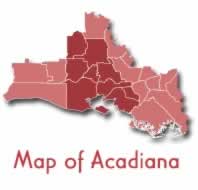 Map showing location of the Acadiana Region (Acadiana Legislative Delegation) |
Many residents in South Louisiana are "Cajuns", descendants of 18th-century Acadian exiles from what are now Canada's Maritime Provinces, while others are descended from various native American and nationalities.
While Cajuns have a large presence, not all who live in Acadiana are culturally Acadian or speak Cajun French, nor is everybody who is culturally Acadian or "Cajun" descended from the Acadian refugees. It is a diverse area!
The Acadiana Region
Acadiana is a vast region emcompassing 22 parishes in French Louisiana in the southern part of the state. It stretches from the Gulf of Mexico to about 100 miles inland, and covers about 14,500 square miles.
The Acadiana geography consists low gentle hills to the north, prairies, and marshes, swamps and bayous closer to the Gulf coast. Rice, sugar cane, and soybeans are the dominant agricultural crops. Included below are links to additonal information about some popular Acadiana travel destinations. But there are lots of other interesting and fun destinations, such as Abbeville, Mamou, Crowley, Jennings, Rayne, Gueydan and so many more!
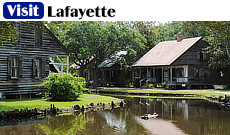 |
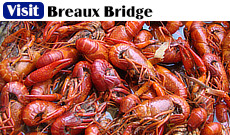 |
 |
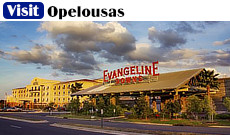 |
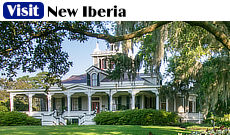 |
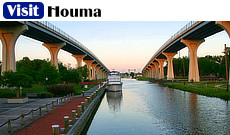 |
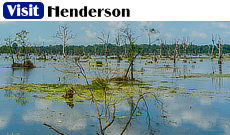 |
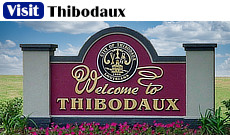 |
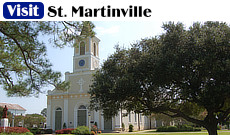 |
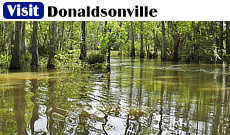 |
 |
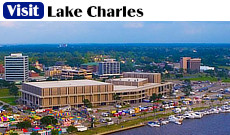 |
Cajun Country Video ... from Louisiana Travel
 |
Acadian Memorial
St. Martinville is located in extreme south Louisiana, in Cajun Country, and situated roughly between New Iberia and Lafayette. It is the parish seat of St. Martin Parish and has a population of about 7,000 residents. It is located on the banks of the historic Bayou Teche.
The city is the home of the Acadian Memorial which honors the 3,000 Acadian men, women and children who found refuge in Louisiana after British forces exiled them from Acadia.
Among the attractions is the stunning mural entitled "The Arrival of the Acadians in Louisiana" by Robert Dafford. The mural, measures 12 x 30 feet, and its figures represent actual documented Acadian refugees who arrived in Louisiana from about 1764 to 1788 and who settled in different parts of the state. Some models are direct descendants of the figures they portray.
Other facets of the Acadian Memorial include The Wall of Names, The Eternal Flame, The Deportation Cross, the Acadian Odyssey Quilt and much more.
The memorial is located 121 S New Market Street. Phone 337.394.2258
Read more at the website of the Acadian Memorial
| The "Arrival of the Acadians in Louisiana" mural Photo courtesy of the Acadian Memorial 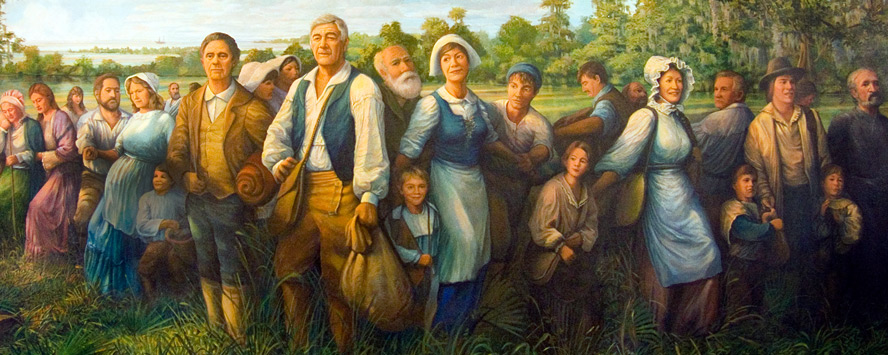 |
Longfellow-Evangeline State Historic Site
Henry Wadsworth Longfellow's 1847 epic poem "Evangeline" made people around the world more aware of the 1755 expulsion of the Acadians from Nova Scotia and their subsequent arrival in Louisiana. Before Europeans and Africans settled along Bayou Teche in present-day St. Martinville, Native Americans had long hunted in this area, including the Attakapas and the Chitimacha. Long before roads, Bayou Teche was a 100 mile long highway, and later was an important factor in the development of St. Martinville. In the mid-1750s, Louisiana's French rulers made land available in the Attakapas District for the raising of cattle to supply meat for New Orleans.
In St. Martinville is the Evangeline Oak made famous in Longfellow's poem. Be sure to visit the Longfellow-Evangeline State Historic Site.
St. Martinville is also the locale of the historic St. Martin de Tours Catholic Church and the St. Martinville Historic District (on the National Register of Historic Places).
Cypremont Point State Park, located to the south of St. Martinville, is a favorite spot for birding enthusiasts and eco-tourists. This 185-acre park offers access to the Gulf of Mexico, along with a man-made beach, fishing, sailing, windsurfing, and other water sports.
 |
Lafayette is located in the heart of Cajun Country and Acadiana, on the banks of the Vermilion River, and at the junction of Interstate Highway I-10 and I-49. Lafayette is known for its Cajun and Creole culture, and its legendary Cajun cooking.
Dining establishments featuring outstanding cuisine are widely known in Acadiana and nationwide, such as Prejean's Restaurant, Randol's Restaurant, Blue Dog Cafe, Don's Seafood Restaurant, and Poupart's Bakery.
Lafayette serves a large, regional retail and tourism industry. Its economy today is diverse, including large onshore and offshore drilling, production and support services for the oil and gas industry.
Lafayette is also the home of the University of Louisiana and its Ragin' Cajuns sports program. We know the famous streets of Lafayette well, including Evangeline Thruway, Kaliste Saloom, Congress Street, Ambassador Caffery Boulevard, and Johnston Street downtown.
Vermilionville
 |
A "must see" Lafayette attraction is called "Vermilionville" which recreates the Cajun lifestyle and folklore in a series of restored buildings. Vermilionville Living History Museum’s mission is to increase appreciation for the history, culture, and natural resources of the Native Americans, Acadians, Creoles, and peoples of African descent in the Attakapas region through the end of the 1800s.
Through historic interpretation and conservation along the Bayou Vermilion, guests are educated on the interactions of these groups and the connections between past and contemporary folklife.
Vermilionville is located at 300 Fisher Road, in the heart of Lafayette, across from the Lafayette Regional Airport off of Surrey Street.
Vermilionville in Lafayette, Louisiana ... A Cajun/Creole Heritage and Folklife Park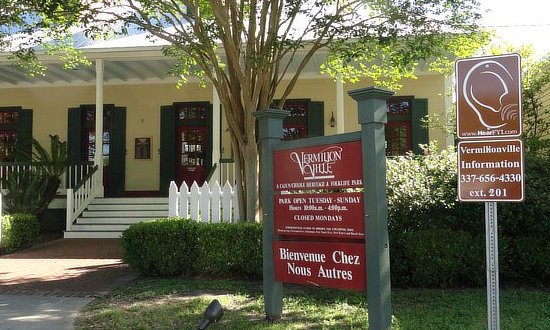 |
Vermilionville Video ... from Louisiana Travel
Acadian Cultural Center
The Acadian Cultural Center is operated by the National Park Service (NPS). The center provides permanent and special exhibits, an award-winning film, ranger talks, and programs that share the history, customs, language, and contemporary culture of the Acadians who became Louisiana's Cajuns.
Who are the Acadians and how did they become Louisiana's Cajuns? Find out through a film that shares their history from their deportation from Nova Scotia in Canada to their settlement in south Louisiana.
Admission to the center and to most programs is free. It is located at 501 Fisher Road in Lafayette.
Acadian Village
Located at 200 Greenleaf Drive in Lafayette, Acadian Village features a number of restored area homes, a blacksmith shop, general store and chapel. It also serves as an event center for special events.
Scene at Acadian Village in Lafayette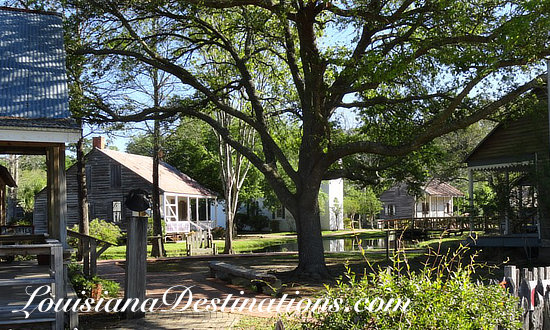 |
Cajun Music from Lafayette resident Cedric Watson: A Mini-Documentary from Louisiana Travel
 |
Lake Charles, the 5th largest city in Louisiana, is known for its Cajun and Creole culture, and its legendary Cajun cooking and fine cuisine. Lake Charles is considered the "Festival Capital" of Louisiana with its 75 annual festivals, from Mardi Gras early each year to the Contraband Days Pirate Festival later in the year.
The first people to settle the lake were Mr. and Mrs. LeBleu of Bordeaux, France. They arrived in 1781 and built their home six miles east of the present site of Lake Charles, and known today as LeBleu Settlement. On March 16, 1867 the area formerly known as Charleston was incorporated into the town of Lake Charles.
Rich in history, the Charpentier Historic District extends over 40 blocks of downtown Lake Charles, and includes one of the finest collections of Victorian architecture in Louisiana, dating from the late 1800s and early 1900s.
 |
Thibodaux is located in south Louisiana's Cajun Country on Louisiana Highway LA-1 on the banks of historic Bayou Lafourche. This area is special to us as our family roots are from nearby Paincourtville, Napoleonville, Plattenville and Labadieville, where my grandfather worked in the sugar cane fields along Bayou Lafourche.
It is the parish seat of Lafourche Parish and has a population of about 15,000 residents. It was incorporated as a town in 1838.
The Acadia Music Fest is Thibodaux's biggest outdoor music festival, and features the best local musicians, artists and Cajun food!
Area communities include Labadieville, Paincourtville, Plattenville, Raceland, Morgan City, Lockport, Des Allemands, Chauvin, Houma, Pierre Part, and Napoleonville.
Nicholls State University is located in Thibodaux.
 |
Bienvenu! In Cajun Country just east of Lafayette on I-10 is the community of Breaux Bridge, the Crawfish Capital of the World, close to Henderson, the gateway to the great Atchafalaya Swamp.
Breaux Bridge is known for its Cajun and Creole culture, and its legendary Cajun cooking and crawfish. Excellent Cajun cooking abounds in Breaux Bridge, whether your tastes tend to Seafood Gumbo, Crawfish Etouffee, Crawfish Bisque, Crawfish Pie, Fried Crawfish, Boudin or maybe even Fried Alligator! Here are located a number of popular restaurants such as Mulate's Cajun Restaurant on Mills Avenue.
Breaux Bridge, located on historic Bayou Teche, is also the site of the world famous Crawfish Festival.
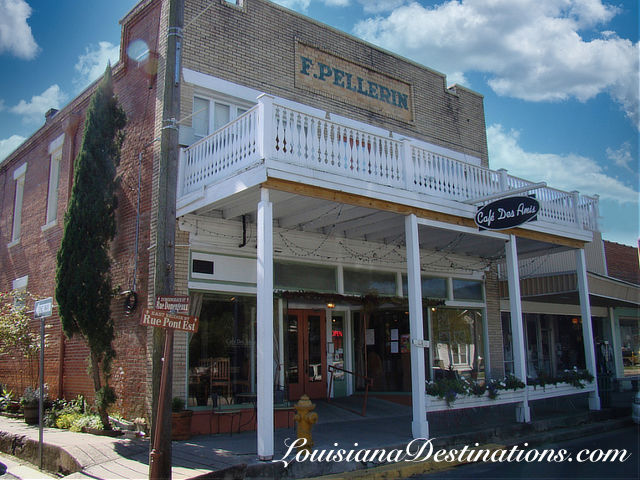 Scene in downtown Breaux Bridge, Louisiana |
In 1771, Acadian pioneer Firmin Breaux bought land in the present-day city of Breaux Bridge, and in 1799 built a suspension footbridge across the Bayou Teche to help ease the passage for family and neighbors. Area residents and visitors soon knew of the bridge, and began calling it “Breaux’s bridge”, later adopted as the city's name. The town received its official founding in 1829 when Scholastique Picou Breaux drew up a plan called Plan de la Ville Du Pont des Breaux.
The Catholic church parish was created in 1847 and Breaux Bridge was officially incorporated in 1859. In 2009 Breaux Bridge celebrated its 150th birthday. In 1959, the Louisiana legislature designated Breaux Bridge as "the Crawfish Capital of the World".
Ville Platte
Ville Platte is the parish seat of Evangeline Parish, and has a population of about 8,500. Ville Platte (meaning "flat town" in French) has a large number of Cajun and Creole families and descendants.
Well known 6,400 acre Chicot State Park is only about 10 miles to the north. Nearby towns include Forest Hill, Glenmora, Oberlin, Oakdale, Eunice, Mamou, Opelousas, Bunkie, and Turkey Creek.
The earliest record of settlement in the immediate area of Ville Platte was in the 1780s. The first post office in Ville Platte was established in 1842.
Eunice
 |
Eunice is located in St. Landry Parish along U.S. Highway 190, with Opelousas to the east, and Kinder to the west. The City of Mamou lies to the north along Louisiana Highway 13, and to the south is Crowley. Located in deep inside Cajun Country, Eunice is known as "Louisiana's Prairie Cajun Capital". Eunice is a lively city that actively celebrates its history and Cajun culture.
While the town is well known for producing some renown musicians, Eunice is most popular for its spectacular Mardi Gras celebration, called the Courir de Mardi Gras. This event showcases some of the most unique cultural customs and the best sampling of live music and Cajun cuisine. It is also home to the famous the World Championship Crawfish Étouffée Cook-Off.
The Jean Lafitte Prairie Acadian Cultural Center is operated by the National Park Service (NPS). The Acadian exiles from Canada's Nova Scotia who settled Louisiana's prairies developed a distinctive cultural mix of Cajun, Creole, and cowboy. The Prairie Acadian Cultural Center tells this story through ranger programs, exhibits, and films. The center features cooking and crafts demonstrations, local musicians, and dancing for all. Center admission is free, and it is located at 250 Park Avenue in Eunice.
The Cajun French Music Hall of Fame and Museum is located at 240 South C.C. Duson Street. It is dedicated to promote and preserve Cajun music and culture. Phone 337.457.6534 for hours and information.
The Food
Excellent Cajun cooking abounds in Louisiana, whether your tastes tend to seafood gumbo, crawfish etouffee, crawfish bisque, crawfish pie, fried crawfish, boudin or maybe even fried alligator!
The two most popular types of cuisine in Louisiana are Creole and Cajun, and telling them apart is difficult for locals and tourists alike because you can often find both variations of the same dish. Here's a look at one Cajun favorite ...
How to Make Etouffee ... YouTube video from Louisiana Travel |
|
 |
That Cajun Delicacy: The Crawfish ... and "The Boil"
This is a great short video, with Cajun music as lagniappe. It shows the entire crawfish boiling process: fishing, the boil, eating and enjoying!
Deep in the Bayou near Grosse Tete, Louisiana-native Jody Meche has been fishing crawfish for years. Get yourself some paper towels and come on over for a boil ... with Jody
"Crawfish Boil: A Backyard Feast in the Louisiana Bayou" with Jody Meche near Grosse Tete, Louisiana. (YouTube Video) |
|
 |
Cajun and Zydeco Music in Louisiana - Video from Louisiana Travel
Outside of jazz, Cajun and zydeco music are perhaps more associated with Louisiana than any other musical genre.
Cajun music continues the musical and dancing traditions originally brought to Louisiana by the Acadians when they were exiled from Nova Scotia in the 1700s. The folk music incorporates the accordion, triangle and fiddle and can be heard in dance halls throughout southwestern Louisiana.
Zydeco, originally a blend of Louisiana French accordion music and Afro-Caribbean beats, almost always includes a washboard and an accordion and, like the blues, offered a way for the rural poor to escape hardships of life through music and dance. The music is a staple at local festivals like the New Orleans Jazz and Heritage Festival.
Acadiana Area Map
Our Cajun Ancestry & Connections
As a native of Louisiana, I grew up in Central Louisiana, and lived in north Louisiana for a period. Later, I lived in the southern part of the state, in Baton Rouge, for several decades. I still have strong connections with the people, and history, of Louisiana.
My ancestors are all of Cajun or French descent who arrived in Louisiana in 1785, and our family roots are from the Bayou Lafourche area and nearby towns of Paincourtville, Napoleonville, Plattenville and Labadieville in South Louisiana.
We are a blend of Fremin, Bourg, Boudreaux, Gautreaux, Thibodeaux, and Prejean. Looking back into our ancestry, we have relatives named Aucoin, Herbert, LeBlanc, Jaunet and Girror. My grandfather worked in the sugar cane fields along the bayou and my father in the sawmills in White Castle.
I remain interested in the continued success and growth of the state, and hope that this site will spread the word about the good places, and people, of Louisiana! Come visit soon, tour the state, and enjoy its many interesting, fun and educational destinations.
Thanks for sharing this travel journey through Cajun Country with us today!
